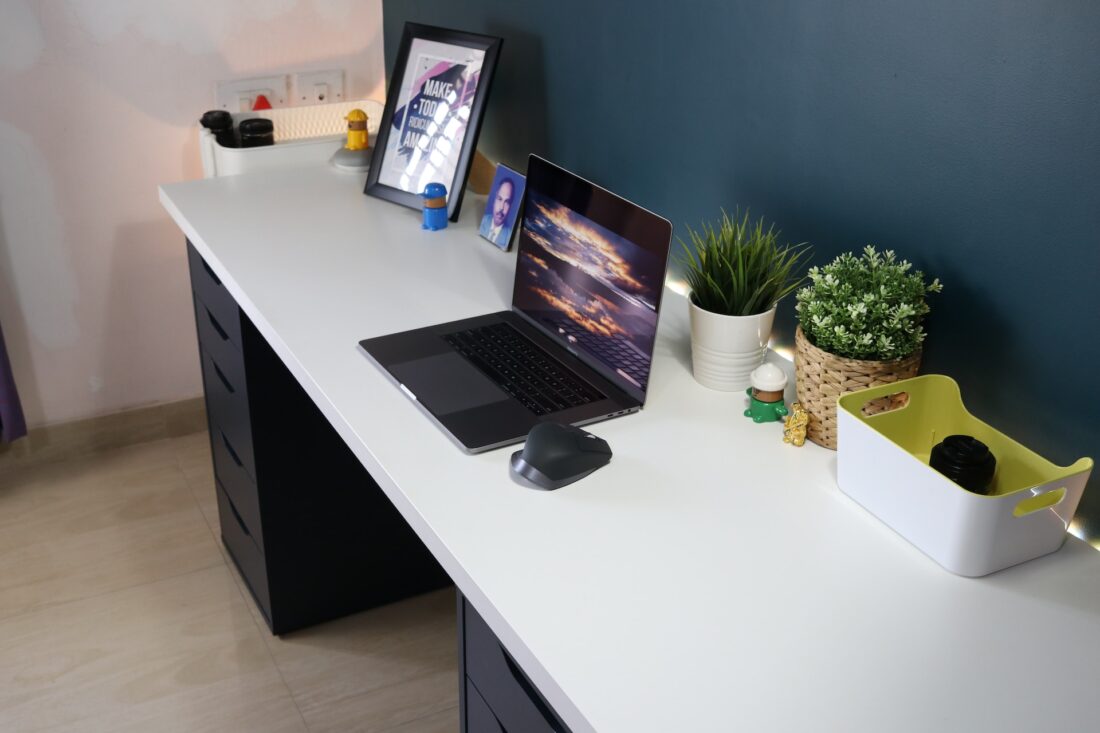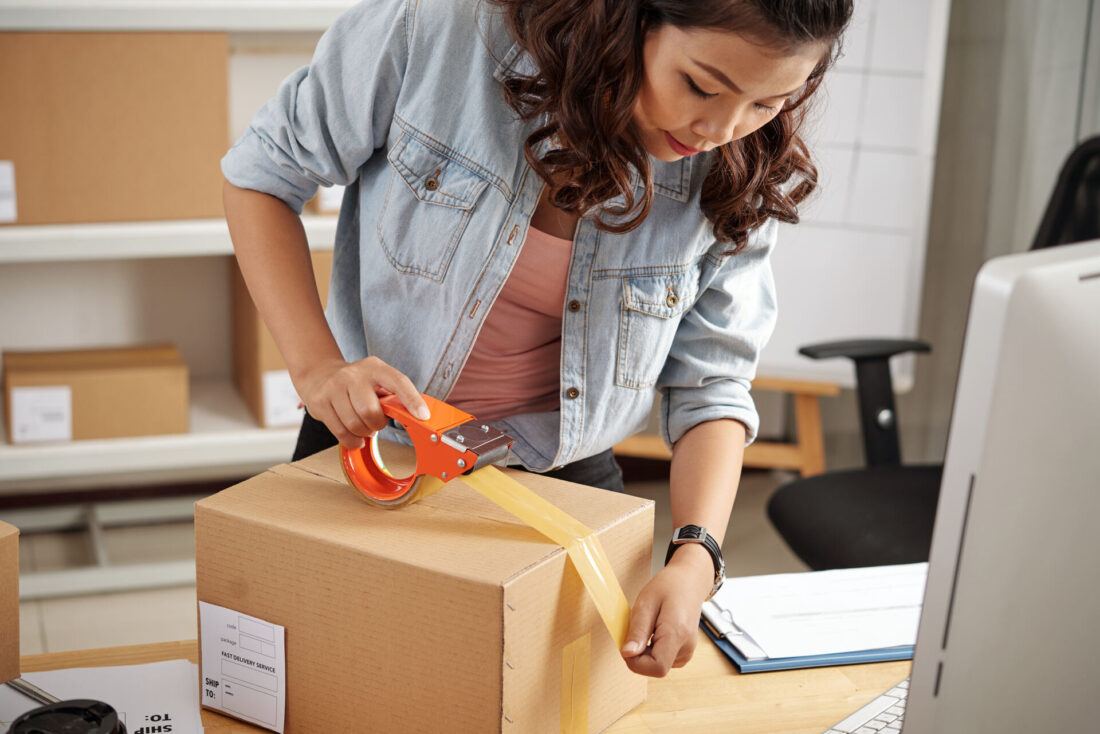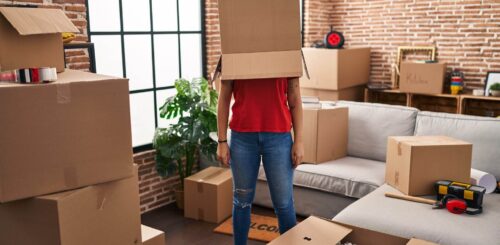Moving across the country can be an exhilarating adventure, but the thought of packing up your entire desk might leave you feeling overwhelmed. Fear not! In this guide, we’ll show you how to pack a desk for moving, transforming the process from a difficult task to a fun and organized experience. From carefully disassembling and protecting your beloved office table accessories to optimizing space in the moving boxes, we’ve got you covered.


So, how can you efficiently pack a desk for moving? The process involves disassembling furniture, securing delicate items, and organizing accessories. Careful handling of electronics, such as computers and printers, is crucial. Safely wrapping and labeling each component ensures a smooth transition during the move, allowing for a stress-free setup in your new space.
Before Anything Else, Assess and Plan
When embarking on a move, it’s essential to begin with a thoughtful assessment and plan. By taking the time to evaluate your needs and resources, you can optimize the process and move efficiently. Planning helps avoid common relocation mistakes and minimizes relocation stress.
Consider factors like timelines, budget, and necessary supplies. Create a checklist and outline the necessary steps, ensuring that every aspect is well-organized and accounted for. A well-thought-out plan sets the foundation for a successful and smooth transition to your new location.
Evaluating the Desk
Begin by determining the desk’s size, weight, and material, as this information will guide your packing and transportation decisions. Next, identify any detachable components, such as drawers or shelves, that can be disassembled to make the relocation process smoother.
By including these details in your home inventory, you’ll have a comprehensive overview of the desk’s specifications and can refer to it when implementing our packing tips.
Creating a Packing Strategy
Start by determining the order of disassembling and packing your table. Consider which components should be taken apart first and how they will fit into your chosen containers. This step ensures that everything is packed efficiently and optimizes space utilization. On top of this, gather the necessary tools and supplies as well as different packaging materials beforehand, such as screwdrivers, bubble wrap, and sturdy boxes.
You can try to score some for free on websites such as Freecycle. Having these items readily available saves time and prevents interruptions during the packing process. A well-thought-out strategy and proper tools make packing easier, safeguarding your office table and easing the overall relocation experience.


Disassemble the Desk
When relocating to another state, disassembling your desk can make it easier to transport. Here’s a step-by-step guide and some moving hacks to help you through the process:
- Clear the table: Remove all items, such as papers, office supplies, and personal belongings.
- Take measurements: Measure the components to ensure they will fit through doorways and in your new space.
- Detach removable parts: Remove drawers, shelves, and any other detachable components.
- Label and organize: Use labeling or numbering to keep track of the disassembled parts. Keep screws and small hardware in labeled bags.
- Protect delicate surfaces: Wrap the desk’s surfaces with bubble wrap or blankets to prevent scratches during the move.
- Securely pack components: Place disassembled parts in sturdy boxes or wrap them individually in protective materials.
- Take photos: Capture photos as a reference when reassembling it in your new location.
How to Remove Drawers and Shelves?
Start by emptying the drawers, ensuring they are free from any items. Then, examine the mechanism holding them in place. It could be screws, levers, or slides. Carefully unscrew or release the mechanism, gently pulling the drawer or shelf out.
An important thing to consider when relocating is to take note of the order in which the parts were removed, as this will help during reassembly. Store any screws or small parts in labeled bags and place them in a designated section of your moving-out list. By handling the desk’s drawers and shelves with care, you can ensure their safe transportation.
How to Take Apart the Legs or Frame?
When faced with the fear of relocation, properly disassembling the desk’s legs or frame can alleviate concerns and ensure safe relocation. Begin by identifying the connecting points between the legs or frame and the table. This might involve screws, bolts, or brackets.
Using appropriate tools such as a screwdriver or wrench, carefully remove these fasteners, keeping them in a labeled bag for easy retrieval later. Take note of the order and orientation of the components to aid in reassembly. If necessary, enlist a second person to provide assistance and ensure stability during the disassembly process.
Here is a video showing what the process of disassembling an office table looks like:
Protect and Pack Components
Start by wrapping each disassembled piece individually with bubble wrap or paper to prevent scratches or damage. For delicate or fragile parts, consider adding an extra layer of protection. Place these components strategically in sturdy boxes, making sure to fill any empty spaces with packing peanuts or crumpled paper to prevent shifting during transit.
Our ultimate relocation guide also suggests labeling each box clearly, specifying its contents. Following effective packing strategies ensures that components remain secure and well-organized.
Wrapping and Padding Should Be Done Carefully
Properly protecting each item minimizes the risk of damage during transportation. Use bubble wrap, paper, or foam padding to shield delicate surfaces and fragile parts from impacts and scratches. Secure the wrapping with tape or straps to keep it in place.
To ensure you’ve done it right, gently shake or move the wrapped components. If there is minimal shifting or movement, and everything feels cushioned and well-protected, you can be confident in your wrapping and padding. Taking the time to wrap and pad components properly guarantees their safety.


Labeling and Bagging Hardware Is Also a Must
Don’t overlook the importance of labeling and bagging hardware. It’s crucial to keep track of screws, bolts, and other small components to ensure a smooth reassembly and unpacking process. Place each type of hardware in separate labeled bags, clearly indicating their purpose and the corresponding section of the table.
Attach the bags securely to the corresponding components using tape, zip ties, or small plastic bags. Alternatively, you can store all the labeled bags in a separate box dedicated to hardware. This way, when it’s time to reassemble the desk, you’ll have easy access to the necessary hardware, saving time and minimizing confusion.
It Is Time to Pack the Desk for Moving
It’s essential to approach the task with organization and efficiency. By following a systematic approach, you can ensure that the table is packed securely and ready for transportation. From selecting the best-sized relocation boxes to arranging the packed components strategically, each step plays a vital role in protecting your desk during the journey to your new destination.
Choose the Right Moving Boxes
Opt for sturdy and durable boxes that can withstand the weight and size of the components. Consider using specialty boxes designed specifically for packing furniture or electronics. Reinforce the boxes with tape for added strength and stability. By selecting the appropriate relocation boxes, you can minimize the risk of damage and ensure everything arrives at its new location intact.
Arrange the Packed Components
Now comes the exhilarating task of arranging the packed components of your desk. Embrace your inner Tetris master as you embark on a quest to harmonize each piece in the most space-efficient and organized manner.
Strategically place the larger items first, like puzzle pieces coming together, ensuring stability and minimizing unnecessary movement. Fill any nooks and crannies with smaller components, like a symphony of screws and bolts, securely nestled in labeled bags or boxes.
This carefully orchestrated arrangement not only optimizes space but also guarantees a smooth and jostle-free journey for your beloved table. Get ready to revel in the satisfaction of a masterfully packed ensemble!


Hire Long Distance Movers Because They Know How to Pack a Desk for Moving
Enlisting the expertise of a professional long-distance moving company is highly recommended. These cross-country movers possess the knowledge and experience necessary to handle the intricacies of packing and transporting furniture, including desks, safely and efficiently.
Long-distance movers are well-versed in the best practices for disassembling, wrapping, and securing components to prevent damage during transit. They have access to specialized materials and equipment, ensuring the utmost protection.
What is more, these movers understand the logistics involved in cross-country moves, including proper loading and securing of items in the moving truck to withstand the rigors of a long journey.
Entrust your precious possessions to movers by investing in long-distance moving services. Have peace of mind knowing that your valuable furniture will be expertly handled and arrive at your new destination in pristine condition.
Packing Service
Sit back and relax, we’ve got packing services covered. We use moving blankets, shrink wrap, bubble wrap and even custom wooden crating. Your stuff will be protected and carefully handled during the move.
Learn moreStorage Services
Our spacious climate-controlled units will protect your things until the drop-off. No need to worry about them because all items are labeled and secure, and each customer gets a dedicated unit mixup isn’t possible.
Learn moreAuto Transport
Move your car across the country in an open or enclosed trailer – for an affordable fee. We offer car transport as a standalone service, but you can bundle it with your household move and get a hefty discount.
Learn moreUse a Variety of Cross-Country Moving Services and Have a Stress Free Move
Cross-country movers offer an array of services designed to cater to your specific needs. Take advantage of professional packing services, where experienced movers will expertly pack your office table and other belongings using high-quality materials to ensure their safety during transit.
If you require temporary storage for your items, cross-country moving services often provide secure storage facilities to accommodate your needs. Additionally, auto shipping services can simplify the transportation of your vehicle. By harnessing the expertise of cross-country movers and their comprehensive range of services, you can alleviate the burden of logistics.


Packing a Desk Doesn’t Have to Be a Tedious Process
By following proper techniques, utilizing the assistance of long-distance moving services, and employing expert strategies, you can ensure a smooth and efficient packing experience. Long Distance USA Movers, with our professional expertise and comprehensive range of services, are here to support you every step of the way.
Whether you need help with packing, storage, or transportation, our team of dedicated professionals is ready to assist you. Don’t let the stress of packing dampen your excitement about the upcoming move. Reach out to Long Distance USA Movers today and let us turn tedious into seamless, making your office table relocation a breeze.
Frequently Asked Questions
How Do I Ensure the Safety of Fragile Components During the Move?
Start by carefully assessing the fragile components of your desk and identifying any areas that require special attention. Disassemble the table, if possible, to reduce the risk of damage. Wrap each fragile component individually with protective materials such as bubble wrap or foam padding, securing them with tape to prevent shifting during transportation.
Place these components in sturdy boxes or containers, ensuring they fit snugly and are properly labeled as “fragile.” Additionally, consider using furniture blankets or moving pads to cushion and protect the disassembled parts.
Should I Disassemble the Desk Entirely or Only Partially?
It is generally recommended to disassemble the desk at least partially, especially if it has fragile components or if it makes the office table more manageable to transport. Completely disassembling it can provide the highest level of protection as it reduces the chances of components getting damaged during the move.
However, if it is structurally stable and the components are not particularly fragile, partial disassembly may be sufficient. Evaluate the desk’s design, size, and fragility to determine the best approach. Remember to document or label the disassembled parts for easy reassembly later.
What Tools Do I Need to Disassemble the Desk?
You will likely need a few tools. A screwdriver set with different types and sizes of screw heads is essential for removing screws and disassembling various parts of the table. Many desks, especially those made from flat-pack furniture, use Allen bolts, so having an Allen wrench (hex key) in the appropriate size will be necessary.
On top of this, an adjustable wrench can come in handy for loosening or tightening nuts and bolts if they are present on your desk. A lightweight hammer may also be useful for gently tapping or nudging certain components during disassembly or reassembly.
How Do I Protect the Desk From Scratches and Damage?
First, use furniture blankets or moving pads to wrap the desk’s components. These blankets provide cushioning and protect against bumps and abrasions during the move. Use bubble wrap or foam padding to cover delicate surfaces, such as glass or delicate wood.
Secure the protective coverings with tape to ensure they stay in place. Furthermore, it’s important to secure loose parts, such as screws or small components, to the main components using tape or zip ties.
Can I Use Regular Moving Boxes for Packing the Desk?
Using regular moving boxes for packing the office table may not be the best option, especially if the desk has irregular shapes or delicate components. Regular boxes may not provide enough support or protection. It is advisable to use custom-made or specialized boxes designed specifically for furniture.
These boxes are typically sturdier and offer better protection for desks during transportation. If you don’t have access to specialized boxes, you can reinforce regular boxes with additional padding and cushioning.
What Is the Best Way to Pack and Protect the Desk’s Glass or Delicate Surfaces?
If possible, remove any detachable glass panels or delicate parts and wrap them individually with bubble wrap or foam padding. Make sure to secure the wrapping with tape to keep it in place. These components can be placed in a separate box or a sturdy container with additional padding to prevent movement and potential breakage.
If the desk has built-in glass or delicate surfaces that cannot be removed, cover them with protective materials such as cardboard or foam sheets.
How Should I Label the Boxes for Easy Identification During Unpacking?
Use a marker or labeling sticker to indicate the contents of each box. You can either write a brief description of the items inside or use a numbering system to match the boxes with a corresponding inventory list. Also, consider labeling the boxes with the room they belong to, such as “Living Room,” “Bedroom,” or “Office.”
Should I Hire Professionals or Do It Myself to Save Costs?
Hiring professionals can provide a smoother and more efficient relocation experience, especially if you have a large office table or fragile components that require special handling. Professionals have the expertise, equipment, and experience to disassemble, pack, and transport everything safely.
Can I Reuse the Original Packaging Materials for the Desk?
Reusing the original packaging materials for the desk is an excellent idea if they are still in good condition. The original packaging is designed specifically to protect it during transportation, so it can provide optimal cushioning and support. If the original packaging materials are intact and fit the table properly, using them again can help ensure the desk’s safety.
What Should I Do if I Encounter Any Difficulties During Disassembly or Packing?
First, consult the desk’s assembly instructions, if available, for guidance on disassembly. If you don’t have the instructions, try searching online for assembly or disassembly guides specific to your model. If you’re still facing challenges, consider reaching out to the manufacturer for assistance or seeking advice from experienced DIY communities or forums.









